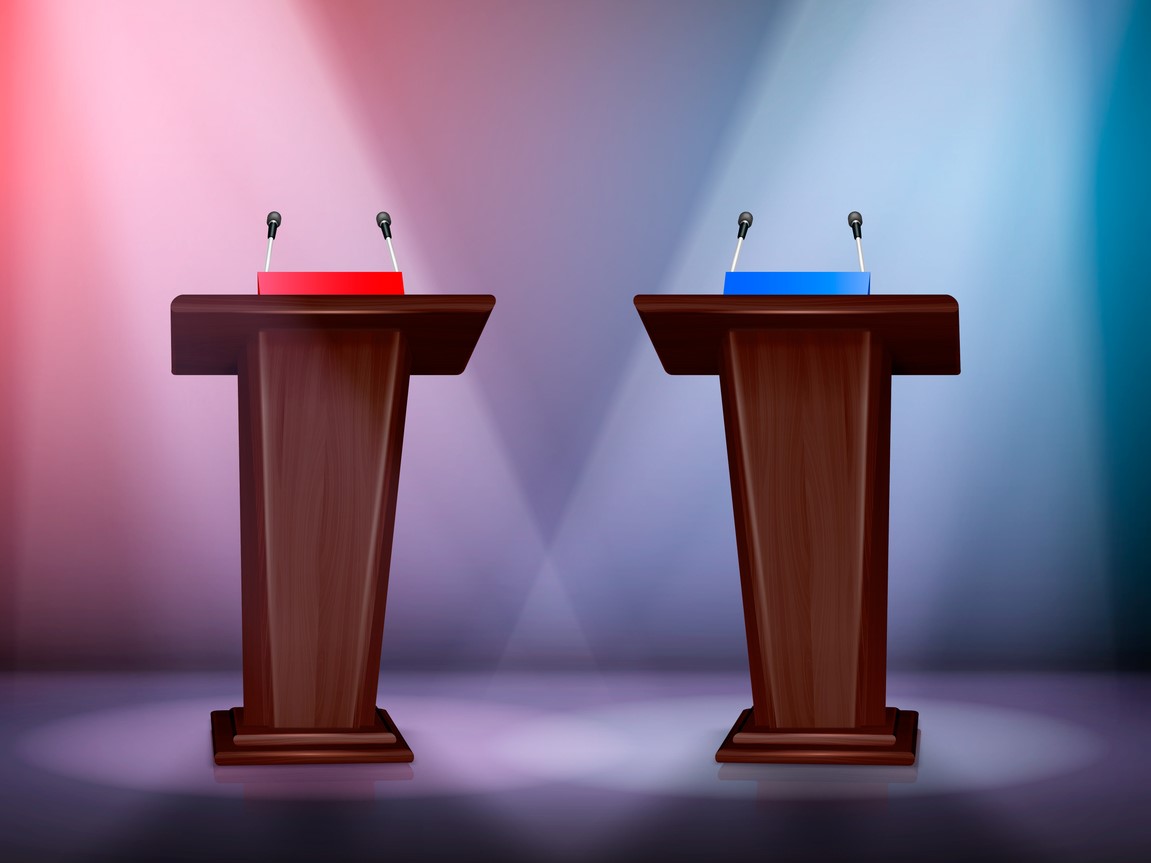Top Stories of 2024: These are the comms tactics that won Harris’ first presidential debate
A majority of pundits, both liberal and conservative, said Harris won. These are her tactics that stood out.

This story was originally published on Sep. 11, 2024. We’re republishing it as part of our countdown of top stories of the year.
Last night’s presidential debate on ABC hit differently than debates past. For starters, it marked the first time Vice President Kamala Harris and former President Donald Trump squared off against each other.
But the biggest change factor was structural: similar to the prior debate, ABC rules stated that the microphones would only be live and unmuted for the candidate whose turn it was to speak (moderators had the option of unmuting both to facilitate quick rebuttals and cross-talk, which they did on occasion).
Despite initial concerns from the Harris campaign that this rule would put her at a disadvantage, pundits and voters across the political spectrum agreed that Harris won. That includes Fox News pundits and the network’s voters panel.
“Trump was so bad, he’s just like an old suit from like 1987 right now,” one panelist said. “He just repeats himself, says the same stuff, and she’s refreshing in that she’s different, I think if he had a different line of attack with her, it would have been more effective.”
This quote underscores a hard truth about debates that Trump knows well — it’s all about what makes for good television. But an attack soundbite only lands when it’s cogent enough to be taken seriously. And just as left-leaning pundits projected a narrative of Trump as a man in cognitive decline, the debate showed that his “same stuff” only works when there’s a comprehensible, tight follow-through to back it up.
Conversely, much of what pundits and voters identified as Harris’ strengths can be better understood through the lens of executive communications. Here are the tactics that worked.
- Redirecting the focus from attacks to personal commitments followed an audience-first approach.
Communicators understand that effective messaging is tailored to specific audiences, and Harris’ debate performance demonstrated that understanding.
While her opponent often deflected questions asking him to clarify specifics and went on the attack, Harris grounded her responses in pledges and commitments that introduced aspects of her identity and recently unveiled policy proposals.
She often spoke about her commitments with the “I” voice, a common tactic during conflict resolution that attempted to appeal directly to the sentiments of undecided voters, many of whom indicated prior to the debate that they still hadn’t been properly introduced to the candidate or lacked enough specifics about her policy proposals. Those were unveiled days before the debate, but contextualized last night before an audience of millions.
This demonstrated that the Harris campaign was listening to what Americans wanted to hear from her. It also backed up her redirection of focus back on the American people, who she often identified as “you.”
“The one thing you will not hear him talk about is you,” she said while looking at the camera. “You will not hear him talk about your needs, your dreams and your desires, and I’ll tell you, I believe you deserve a president who actually puts you first, and I pledge to you that I will.”
This approach helped Harris refocus and redirect to acknowledge the people each issue affects, with one notable example coming as she explained the Biden administration’s hardline support for Ukraine by warning that if Russian President Vladamir Putin took Kyiv, he would come for Poland next.
She then urged Trump to “tell the 800,000 Polish Americans right here in Pennsylvania” how he would address Putin’s ambitions for conquest in war.
It was a narrative leap, but one that strengthened her argument by underlining her concerns over Russia’s behavior and bringing it back to the “you” voice.
- Hand gestures and body language were a nonverbal communication win.
While the muted mics minimized each candidate’s ability to interject, the debate was heavy on gestures from both Harris and Trump.
These nonverbal cues often said more than direct attacks or soundbites ever could.
The split screen revealed that while Harris spoke, Trump squinted, grimaced and muttered to himself. While Trump spoke, Harris looked directly at him to show she was listening, smiled or chuckled when she perceived a comment to be absurd, and projected a face of concern that communicated worry about his cognitive ability. This was evidenced by the delivery of lines like, “Donald Trump was fired by 81 million people… and clearly, he’s having a hard time processing that.”
Hand gestures proved to be Harris’ most effective nonverbal cues, however. After being called a Marxist because her father taught a Marxist economics course at Stanford, Harris shot him an incredulous smile while placing her hand under her chin in a calm, poised stance and continued to watch him.
“It was a deliberately eye-catching way to silently say, ‘I cannot even believe what you’re saying’,” reported Politico. “This was her go-to behavior several times when Trump said something that she perceived as outrageous. I cannot remember another presidential debate in 50 years where we have seen that behavior, and it says something about Harris and her willingness to convey her sentiments directly and overtly, without fear, looking at Trump with laser-like focus.”
Beyond GIF and meme fodder, this approach benefited Harris because it helped her spend less time on the attack and gave her the power to express herself even when she wasn’t speaking.
- A prosecutorial strategy showed lived experience in action.
Teasing Harris’ strategy before the debate, MSNBC anchors asked Claire McCaskill, a former senator from Missouri and fellow former prosecutor, what prosecutorial skills Harris would bring to the table.
McCaskill emphasized that prosecutorial procedure has no script. As such, it’s a perfect training ground for a debate.
“That’s cross-examination,” she said, “when you pose a question that is really a statement in the form of a question, that doesn’t give the person receiving the question a lot of wiggle room.”
Per the debate rules, candidates were not allowed to ask each other direct questions. But the tactics here still applied as Harris inverted this logic — instead of posing a question as a statement, she offered statements that raised questions about Trump’s past comments on everything from abortion access to illegal immigration to the peaceful transfer of power.
This approach can inform how executives address crises by redirecting the conversation to focus on what they consider to be the true issue. It’s a delicate dance—when done poorly, it comes off as spin and deflection that can further alienate your audience. But when done artfully, it demonstrates a command of narrative focus.
While this approach drove past criticisms of Harris’ managerial style, it allowed her to emphasize her lived experience and draw a contrast to her opponent, a frequent plaintiff, without continuing to harp on his felony convictions, impeachment and other losses in court.
“I’ve only had one client, the people,” Harris said in her closing statement. “And I’ll tell you, as a prosecutor, I never asked a victim or witness, ‘Are you a Republican or a Democrat?’ The only thing I ever asked them was, ‘are you OK?’”
Justin Joffe is the editorial director and editor-in-chief at Ragan Communications. Follow him on LinkedIn.






